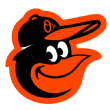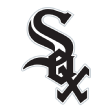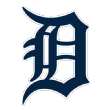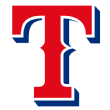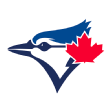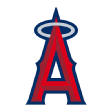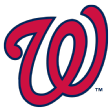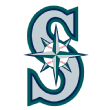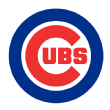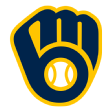2019 MLB Draft: Round 1 picks, order, live updates and analysis

The 2019 MLB draft starts Monday (7 p.m. ET) with Rounds 1-2 and continues through June 5 (Rounds 3-10 on June 4 and Rounds 11-40 on June 5).
Adley Rutschman went first overall to the Baltimore Orioles, with the Kansas City Royals and Chicago White Sox up next.
Check back for analysis of all the picks in the first round and more.
Full coverage of the 2019 MLB draft is available hereand click here for complete the draft 2019 order from Rounds 1-40.
More coverage from Keith Law:
Top 100 |
1. Baltimore Orioles:Adley Rutschman, C, Oregon State
Who is Rutschman? The clear No. 1 prospect in this draft class and a sure-bet to stay at catcher, Rutschman hit .408 for Oregon State this year. According to Keith Law, the switch-hitting backstop has one of the safest floors of the draft because he will stay behind the plate and the ceiling of a perennial All-Star thanks to his power potential.
Why the Orioles took him here: It's no secret the Orioles have holes to fill just about everywhere on the diamond and plugging the one behind the plate with a potential franchise cornerstone who has drawn comparisons to Buster Posey and Joe Mauer is a pretty good place to start. How good is Rutschman? Well, Cincinnati showed the ultimate sign of respect by electing to walk him with the bases loaded during an NCAA regional matchup last week.-- Dan Mullen
2. Kansas City Royals:Bobby Witt Jr., SS, Colleyville (Texas) Heritage HS
Who is Witt? Arguably the most famous name in this year's class Witt's father was the No. 3 overall pick in the 1985 draft, making the Witts the first father-son combination to both be selected as top-five picks. The Texas prep star is a true shortstop with potentially plus defense, a huge arm, good instincts and a history of hitting.
Why the Royals took him here: According to Keith Law, the Royals zeroed in on Witt months ago and have not wavered on making him their guy at No. 2. The upside Kansas City is betting on is a middle-of-the-diamond star, but there is some reason for concern about Witt's age (he turns 19 in June) for a high schooler since he has been older than most of the competition he has faced so far. -- Mullen
3. Chicago White Sox: Andrew Vaughn, 1B, Cal
Who is Vaughn?The 2018 Golden Spikes winner, Vaughn has absolutely raked since he set foot on campus in Berkeley. He followed up his .402 batting average in 2018 by hitting .381 this year and hit 50 home runs in his three seasons at Cal.
Why the White Sox took him here:Keith Law called Vaughn the best pure bat in this draft and it would have been hard to imagine Chicago passing on adding that kind of hitter with the No. 3 overall pick. As a major conference college star, Vaughn should move quickly through the minors and bring his smooth right-handed swing to the South Side sooner than later. The history of shorter first basemen as high draft picks isn't great, but Vaughn has a chance to change that here. -- Mullen
4. Miami Marlins:J.J. Bleday, OF, Vanderbilt
Who isBleday? A corner outfield prospect who has shown his power in the toughest conference in college baseball,Bleday is a future right fielder with an unusual swing that could present some risk but enough pop in his bat to make it more than worth it here.
Why the Marlins took him here: A polished college bat is a great fit for a franchise in desperate need of offense at the big league level. Miami has gravitated toward athletic players during Derek Jeter's short tenure, but betting on a bat-first prospect shows a willingness to break from the mold for the right player.-- Mullen
5. Detroit Tigers:Riley Greene, OF, Hagerty HS (Oviedo, Florida)
Who isGreene? Greene lags behind Witt as an all-around prospect, but might be the best pure bat of any prep hitter in this class. According to Keith Law, Greene's future is in left field.
Why the Tigers took him here: Greene's defense is a work in progress, but Detroit is betting on a high schooler who could hit for both power and average thanks to his hand speed. -- Mullen
6. San Diego Padres:C.J. Abrams, SS, Blessed Trinity HS (Roswell, Georgia)
Who is Abrams? One of the fastest runners in this year's draft, Abrams is a high school shortstop with the athleticism to stay there or end up in center field, where his speed could be put to even better use.Keith Law sees Abrams as a prospect with the potential to hit for average, but not much power.
Why the Padres took him here: With the draft playing out according to form so far, Abrams seemed like the clear choice for San Diego here. One advantage for the Padres is that having a system already stocked with young players in or near the majors, allows them to take a chance on a toolsy high school star who might take a little extra time to develop. -- Mullen
7. Cincinnati Reds:Nick Lodolo, LHP, TCU
Who is Lodolo? The first pitcher off the board in a class that Keith Law has noted as the weakest in his time covering the draft, Lodolo is a hard-throwing lefty with a slightly lower arm slot than many starters, leading some to wonder if his future will be in the bullpen.
Why the Reds took him here: Lodolo might profile more as a mid-rotation starter than a true ace -- if he stays a starting pitcher -- but in this draft, he's the best left-handed pitching prospect available and his slider could become a devastating out pitch as he makes his way through Cincinnati's system.He'll get the full slot of $5.43 million, sources tell Jeff Passan.-- Mullen
8. Texas Rangers:Josh Jung, 3B, Texas Tech
Who is Jung? College bats are the clear strength of this draft and Jung is another player who has been extremely productive during his time as a collegiate player. While his power numbers don't blow you away, he hit .392 in 2018 and has followed it up with a .335 average for a Texas Tech team that will host a Super Regional next weekend.
Why the Rangers took him here: Texas is clearly betting that the hit tool will carry Jung as a prospect. There are some questions about hit power potential and he will need to work to stay at third base defensively -- but there will be a spot for him if he continues to throw out hits like he has as a Red Raider. -- Mullen
9. Atlanta Braves:Shea Langeliers, C, Baylor
Who is Langeliers? The second-best catching prospect in this draft,Langeliers is another prospect who, like Rutschman, should move quickly and stay behind the plate. The Baylor backstop suffered a broken hamate bone early in the season, but kept his stock up by performing well after returning to the field.
Why the Braves took him here: As the compensation pick for not signing Carter Stewart last year, Atlanta is getting a player who would be the top catching prospect in most drafts. Is Langeliers going to challenge Rutschman as a hitter? No. But a strong defensive catcher with some offensive ability still carries plenty of value. -- Mullen
10. San Francisco Giants: Hunter Bishop, OF, Arizona State
Who is Bishop? The younger brother of Mariners outfielder Braden, Hunter didn't hit much his first two years at Arizona State before exploding out of the gate this season. He has power and speed and plays center field for ASU, but may end up as a left fielder in the pros.
Have you seen that San Francisco outfield? The Giants had the worst outfield production in the majors in 2018 and are near the bottom once again in 2019. Bishop had the best tools left on the board and while he has a lot of swing-and-miss in his game (23 percent strikeout rate), if it all comes together he has much ceiling as any outfielder in this draft. -- David Schoenfield
11. Toronto Blue Jays:Alek Manoah, RHP, West Virginia
Who is Manoah? Listed at 6-foot-6 260 pounds,Manoah is as big a pitching prospect as the top of the draft has seen in recent memory. A reliever his first two seasons in Morgantown,Manoah's stock skyrocketed after he moved into the rotation and excelled this year.
Why the Blue Jays took him here: Have we mentioned this isn't a great class for pitching prospects? That said, Manoah provides Toronto with the crop's best bet to become a solid piece of a big league rotation. Keith Law points to a four-pitch mix highlighted by two swing-and-miss pitches (Manoah's changeup and slider) that should get Manoah to the majors. -- Mullen
12. New York Mets:Brett Baty, 3B, Lake Travis HS (Austin, Texas)
Who is Baty? A power-hitting prep prospect who will need his bat to carry him to the majors as his defense at third base is very much a work in progress. He's also one of the oldest high school players in this draft at19 -- a pretty big red flag.
Why the Mets took him here: Baty has some of the best power in this draft, but isn't just a power hitter. If it all comes together, New York just took one of the best all-around hitters in this draft. But there are a few more 'ifs' than some of the other prospects drafted around him here. -- Mullen
13. Minnesota Twins:Keoni Cavaco, 3B, Eastlake HS (Chula Vista, California)
Who is Cavaco? A late-blooming third baseman/shortstop, Cavaco was the biggest pop-up high school player of the spring, moving from a little-known prospect to a first-round talent based on his power potential, athleticism and the ability to play third with the possibility that he can stick at shortstop.
Why the Twins took him here: With the big-league team thriving in first place and top-rated prospects like Alex Kiriloff and Royce Lewis on the way, the Twins have a good foundation to remain successful in the short-term and the long-term. Cavaco is a roll of the dice of sorts as the Twins project his breakout performance as a sign that this is a player just beginning his upward trajectory. -- Schoenfield
14. Philadelphia Phillies:Bryson Stott, SS, UNLV
Who is Stott? A shortstop who is likely to actually stay at shortstop despite his size. The UNLV product is listed at 6-foot-3, 200 pounds and most often compared to Giants shortstop Brandon Crawford.
Why the Phillies took him here: Stott will have to prove that his numbers aren't just the product of his hitter-friendly environment in Las Vegas and the Mountain West Conference, but Philadelphia is getting a potential contributor on both sides of the ball at shortstop with enough size that a move to third base is also a possibility. -- Mullen
15. Los Angeles Angels:Will Wilson, SS, NC State
Who is Wilson? Wilson is a college shortstop who profiles more as a second baseman in pro ball. Last summer forUSA Baseball's Collegiate National Team, Wilson played second while the man who went off the board one pick before him tonight -- Bryson Stott -- was the shortstop.
Why the Angels took him here:Wilson has demonstrated power that should play at second base during his time at NC State, belting a combined 31 home runs over the past two seasons. -- Mullen
16. Arizona Diamondbacks:Corbin Carroll, OF, Lakeside HS (Seattle)
Who is Carroll? The No. 4 player on Keith's big board, Carroll is an undersized outfielder with speed, athleticism and plus range in center field, and Keith believes he has the strength and swing to get to above-average power as he matures. As Keith wrote, if he was 6-foot-3 Carroll might have been a candidate to go first overall.
Why the Diamondbacks took him here: With seven of the first 75 picks, the Diamondbacks have the biggest draft pool of the 30 teams and they might have received a gift here with their first selection. Given the success of all the undersized players across the majors right now, Carroll's size isn't the big negative it may have been viewed as a generation ago. -- Schoenfield
17. Washington Nationals:Jackson Rutledge, RHP, San Jacinto College
Who is Rutledge? If you thought Alek Manoah was big, wait until you see the 6-foot-8 260-pound Rutledge on the mound. Rutledge landed atSan Jacinto after transferring from Arkansas and dominated with a fastball that touched 98 regularly this spring.
Why the Nationals took him here: Six-foot-8 with a high 90s fastball, a cutter and an improving breaking ball. It's not hard to understand why Washington would jump on a chance to draft a pitcher with that upside, but it remains to see what he'll do against elite competition after taking the junior college route to the draft. -- Mullen
18. Pittsburgh Pirates:Quinn Priester, RHP, Cary-Grove (Illinois) HS
Who isPriester? A 6-foot-3 right-hander from a northern state,Priester is a strike-thrower with a repeatable delivery and a swing-and-miss curveball.
Why the Pirates took him here:Just before tonight's draft started, Keith Law said he was hearing Pittsburgh was likely to go with a high school arm here. Given that Will Wilson andShea Langeliers (two players Keith had going to the Pirates in mock drafts) were already off the board, it seems the Bucs' decision was made easier by those selecting before them. -- Mullen
19. St. Louis Cardinals: Zack Thompson, LHP, Kentucky
Who isThompson? The Kentucky product is a southpaw who has proven he can compete against high-level competition in the SEC this season. He struck out 130 batters in 90 innings and posted a 2.40 ERA for the Wildcats thanks to a strong fastball/curveball combo.
Why the Cardinals took him here: According to Keith Law, Thompson could have been a top-10 pick if not for a 2018 elbow issue andsome late elbow pronation in his delivery. The Cardinals have a history of success drafting starting pitchers from major conferences and Thompson could be next in line. -- Mullen
20. Seattle Mariners:George Kirby, RHP, Elon
Who is Kirby? A 6-foot-3 right-hander from a non-power conference, Kirby gets his fastball up to 95 and his curveball and changeup both rate as above-average. Kirby walked just six batters in 88.1 innings, but his fastball was fairly hittable for his level of competition (73 hits) so it's hard to know if he can develop from a control guy (throws strikes) to a command guy (hits location).
Why the Mariners took him here: Well, for the third time in four years, Jerry Dipoto takes a smaller-college guy in the first round, following outfielder Kyle Lewis (Mercer) in 2016 and pitcher Logan Gilbert (Stetson) last season. Like Gilbert, Kirby is viewed as a high floor guy more than a high ceiling and given the state of the Mariners pitching staff, betting on a higher degree of certainty is understandable. -- Schoenfield
21. Atlanta Braves:Braden Shewmake, SS/3B, Texas A&M
Who isShewmake?A contact hitter in the power-strikeout era, Shewmake hit over .300 in all three of his years at Texas A&M and struck out just 27 times in 241 at-bats this season. At 6-foot-4, he's a tall shortstop who could end up at second, third or moving around the diamond.
Why the Braves took him here: Have we mentioned that college hitters are the strength of this draft?Shewmake proved himself in the tough SEC and is a safe bet to produce with his hit tool. There isn't a lot of power here, but Atlanta added a second high-floor player after landingShea Langeliers at No. 9 -- Mullen
22. Tampa Bay Rays
23. Colorado Rockies
26. Arizona Diamondbacks
27. Chicago Cubs
30. New York Yankees
31. Los Angeles Dodgers
32. Houston Astros
Compensation Picks
No. 33:Arizona Diamondbacks:*
No. 34:Arizona Diamondbacks:**
*For losing Patrick Corbin
**For losing A.J. Pollock
Competitive Balance Round A
No. 35 Miami Marlins:
No. 36 Tampa Bay Rays:*
No. 37 Pittsburgh Pirates:
No. 38 New York Yankees:**
No. 39 Minnesota Twins:
No. 40 Tampa Bay Rays:***
No. 41 Texas Rangers:****
* For not signing Gunnar Hoglund
** From Reds via trade
*** From A's via trade
**** From Brewers via trade
Second Round
No. 42 Baltimore Orioles:
No. 43 Boston Red Sox:*
No. 44 Kansas City Royals:
No. 45 Chicago White Sox:
No. 46 Miami Marlins:
No. 47 Detroit Tigers:
No. 48 San Diego Padres:
No. 49 Cincinnati Reds:
No. 50 Texas Rangers:
No. 51 San Francisco Giants:
No. 52 Toronto Blue Jays:
No. 53 New York Mets:
No. 54 Minnesota Twins:
No. 55 Los Angeles Angels:
No. 56 Arizona Diamondbacks:
No. 57 Pittsburgh Pirates:
No. 58 St. Louis Cardinals:
No. 59 Seattle Mariners:
No. 60 Atlanta Braves:
No. 61 Tampa Bay Rays:
No. 62 Colorado Rockies:
No. 63 Cleveland Indians:
No. 64 Chicago Cubs:
No. 65 Milwaukee Brewers:
No. 66 Oakland Athletics:
No. 68 Houston Astros:
No. 69 Boston Red Sox:*
* Boston's top pick was dropped 10 spots (33 to 43) because the team was more than $40 million over the luxury tax.
Competitive Balance Round B
No. 70 Kansas City Royals:
No. 71 Baltimore Orioles:
No. 72 Pittsburgh Pirates:
No. 73 San Diego Padres:
No. 74 Arizona Diamondbacks:
No. 75 Arizona Diamondbacks:*
No. 76 Seattle Mariners:**
No. 77 Colorado Rockies:
* From Cardinals via trade
** From Indians via trade
Compensation Picks
No. 78 Los Angeles Dodgers:*
* For losing Yasmani Grandal
Here is the order for rounds 3-40.
Related Video
Related Topics
- SPORTS
- ESPN
- ATLANTA BRAVES
- MLB
- CHICAGO WHITE-SOX
- MINNESOTA TWINS
- KANSAS CITY-ROYALS
- ARIZONA DIAMONDBACKS
- NEW YORK-METS
- WASHINGTON NATIONALS
- PITTSBURGH PIRATES
- SAN DIEGO-PADRES
- TORONTO BLUE-JAYS
- TEXAS RANGERS
- CINCINNATI REDS
- MIAMI MARLINS
- SAN FRANCISCO-GIANTS
- DETROIT TIGERS
- LOS ANGELES-ANGELS
- BALTIMORE ORIOLES

